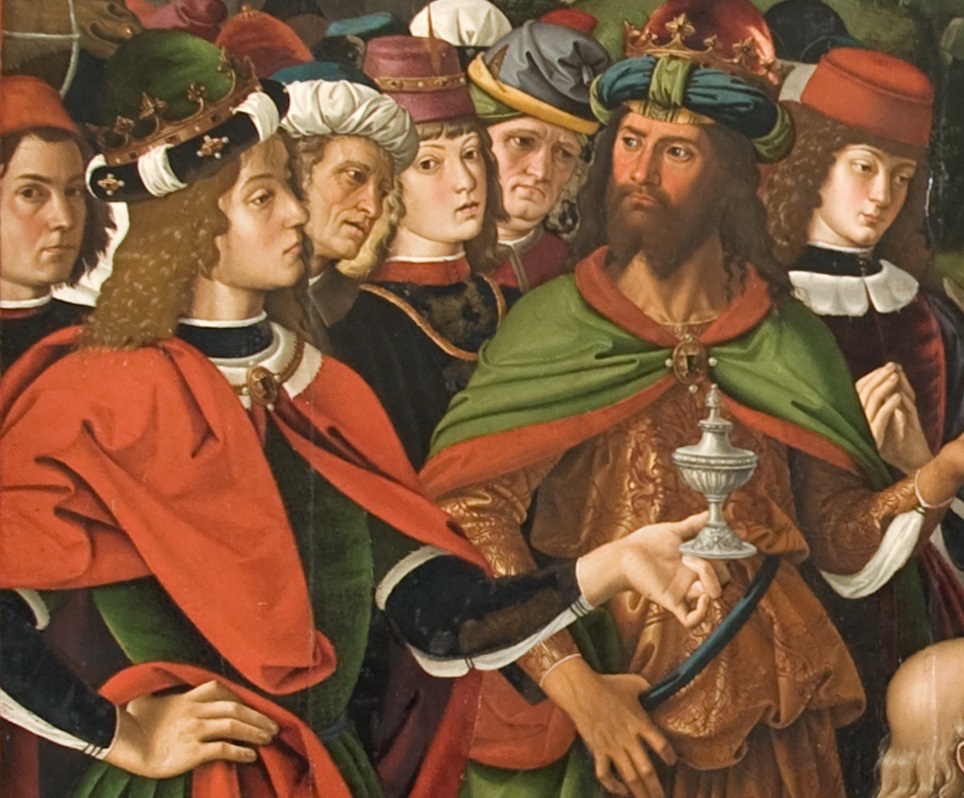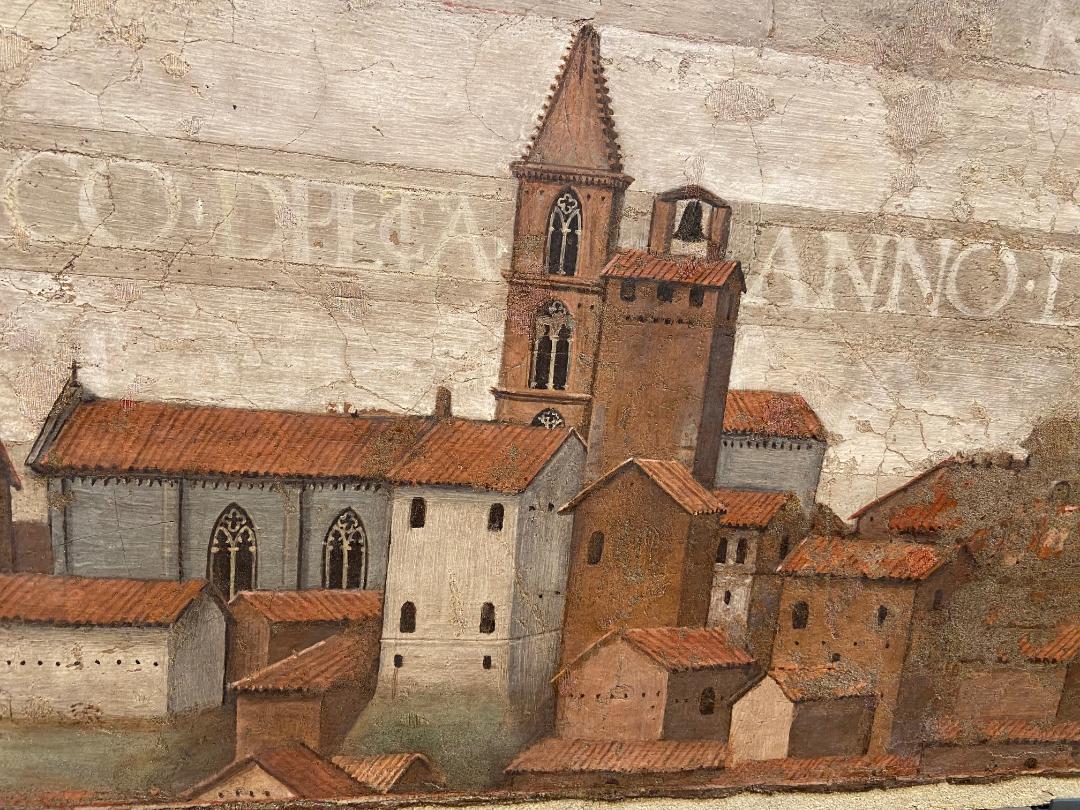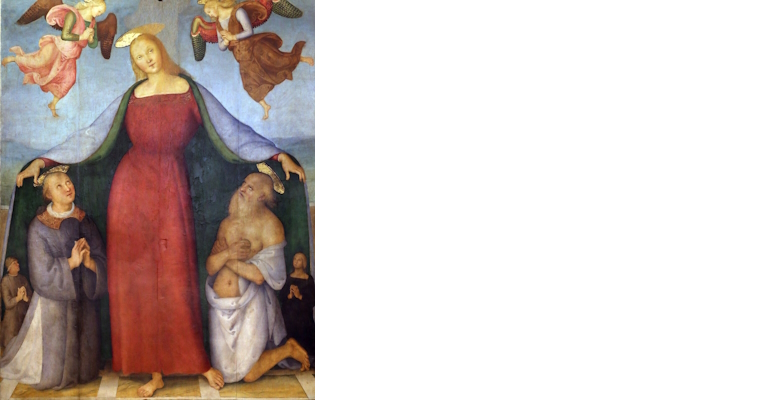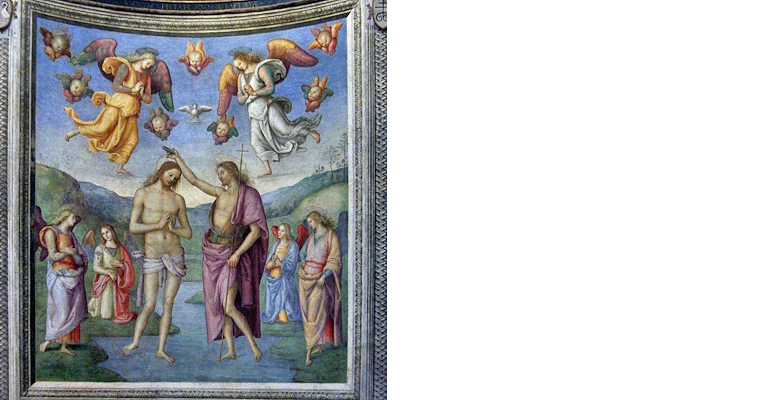The first stop of the itinerary is dedicated entirely to the Umbrian capital.
For the artist, this city has always represented a strong element of identity: it is no coincidence that its main street is named after Pietro Vannucci, as is the first municipal art collection, the ‘Pietro Vannucci’ Civic Art Gallery, which formed the first nucleus of the National Gallery of Umbria.
And it is precisely from the Gallery in Perugia, a museum rich in masterpieces of Italian art, that our itinerary starts. It is housed in the beautiful rooms of the Palazzo Comunale, and contains the largest number of works by Pietro Vannucci in the world.
Two rooms are dedicated to the master Vannucci: room 16 on the third floor and room 23 on the second.
The works exhibited in room 16 illustrate the path that led the author to become the most successful artist in Italy, between his beginnings and his first prestigious commissions.
Here we find the beautiful and enigmatic Tavolette di San Bernardino, painted in collaboration with a team of painters, the Pietà del Farneto, the splendid Adorazione dei Magi, the small and precious Annunciazione Ranieri, the Imago pietatis - what remains of one of his masterpieces, the Pala dei Decemviri, painted for the chapel of this palace and now dispersed in various places -, the Gonfalone della giustizia, the Madonna della Consolazione.
Room 23 on the second floor is entirely dedicated to the masterpieces of his maturity, when the painter concentrated his activity in Umbria, until he closed the Florentine workshop in 1511. Visitors can admire the large altarpieces that repeat the artist's stylistic traits: the gentle and graceful madonnas, shadowing the figure of Chiara Fancelli, the painter's young wife, the ‘dancing’ angels, the ecstatic and elegant saints, the turreted cities in the background, the airy and aquatic landscapes, the bright and iridescent colours, the flowery and rocky corners, the light of eternal spring in Vannucci's canvases.
On Corso Vannucci, also in Perugia, you can admire one of Pietro Perugino’s great masterpieces: the frescoes of the Nobile Collegio del Cambio (Ancient Seat of the Money Changers’ Guild), painted between 1496 and 1500.
The money changers, the equivalent of today’s bankers, were a very powerful guild, so much so that in the mid-15th century they gained the important privilege of having their headquarters within the city hall. The decoration of the Sala delle Udienze, where the magistrates of the money changers’ guild held their meetings, was entrusted to Pietro Perugino, who was then Italy’s most famous painter.
Along the walls of the room, Vannucci created an important cycle of frescoes with a complex iconographic program developed by the humanist Pietro Maturanzio, centered on the idea of the correspondence between pagan wisdom and Christian virtues. According to the complex message conveyed by the paintings, the cardinal virtues of the ancient figures depicted there were fully realized in Christ.
Amidst beautiful grotesques and other decorations, the ruddy face of a serious-looking fifty-year-old man stands out: it is the artist’s self-portrait, who proudly identifies himself in the inscription below as “egregius pictor”.
Our Perugian itinerary in the footsteps of the artist concludes in Borgo Sant’Angelo. Here, in the convent of the Poor Clares of Sant’Agnese, Vannucci painted, in 1522—a year before his death—a fresco of the Madonna delle Grazie with Saints Anthony Abbot and Anthony of Padua; at her feet are the two figures of the commissioning nuns, Sister Eufrasia and Sister Eustochia. The current religious community still observes cloister, but Pope Leo XIII, a former bishop of Perugia, removed this restriction for the chapel with the paintings to allow public viewing of the fresco.
























.jpeg/1a99243a-acc0-ab5f-31b4-dacb9fa90d0c?width=1920)




